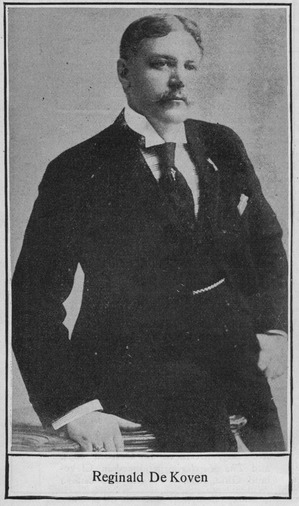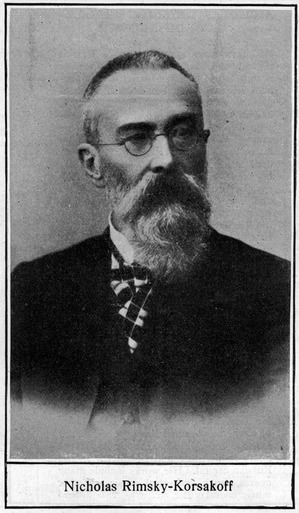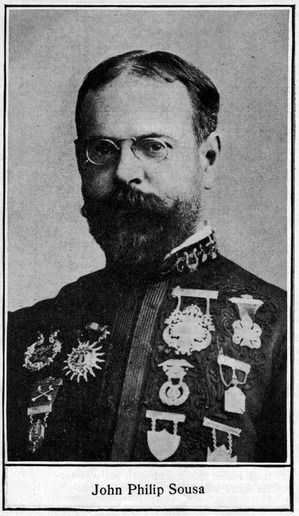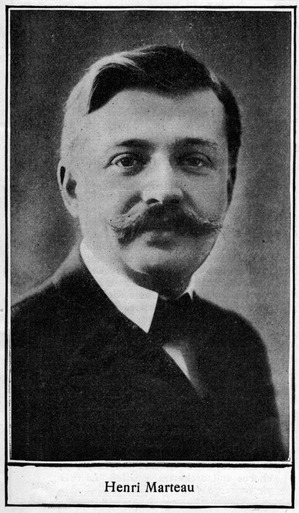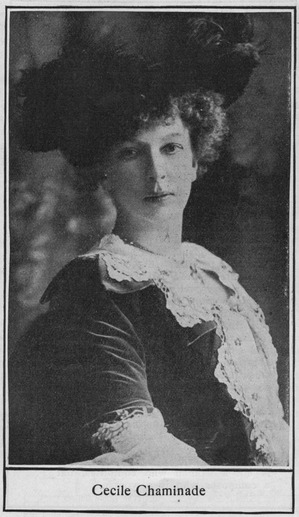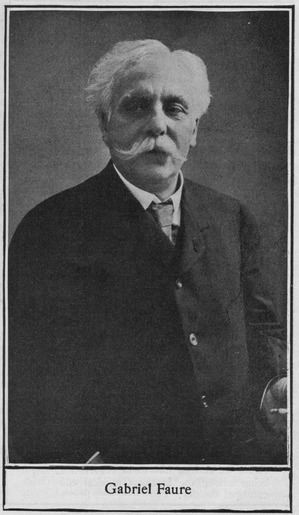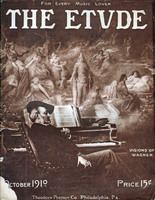Mr. de Koven was born at Middletown, Conn., April 3, 1859. His education was received mainly in Europe, whither he went in 1870. He graduated at Oxford University, England (St. John's College), in 1879. His musical studies have been very various, and were undertaken at Stuttgart with Speidel, and with Lebert and Pruckner. At Frankfort he studied with Dr. Hauff for composition, and after staying there for six months moved on to Florence, Italy, where he studied singing with Vanuccini. Study in operatic composition followed, first with Genée, in Vienna, and then with Delibes, in Paris. Mr. de Koven now resides in New York, where he is engaged in composition and also in musical criticism. As critic on a leading New York journal, Mr. de Koven has been able to find excellent scope for his wide musical knowledge. Nevertheless, it is as a composer that his name is best known to the American musical world. His songs are very numerous and very popular, especially Oh Promise Me, which is one of the biggest song successes of recent years. His comic operas have been very popular, and as a composer of works of this description Mr. de Koven, like Victor Herbert, has become famous throughout the country. His greatest successes have been Robin Hood, produced in Chicago, 1890, and in London, 1891, and *Rob Roy, produced in Detroit, 1894, and The Mandarin, produced in Cleveland, Ohio, 1896.
(Rimschkee-kor'-sah-koif.)
Rimsky-Korsakoff was born March 18, 1844, at Tikhvin, in the government of Novgorod. The son of aristocratic parents, his early manifestations of musical genius were not greatly encouraged, and in 1856 he went to the Naval College at St. Petersburg, where he remained until 1862. At the same time, however, he contrived to learn a good deal about music, and when, in 1861, he made the acquaintance of Balakirev, he became, with Cui, Moussorgski and Borodin, a willing follower of that strenuous leader of the "New School" of Russian music. In 1862 Rimsky- Korsakoff went to sea on a long cruise, which lasted until 1865. During that time he completed his first symphony. As may be imagined, the work was composed under difficulties. Life on a battleship is not made pleasant for budding composers. On his return the work was performed with great success, under the direction of Balakirev, in St. Petersburg, and other orchestral works followed. In 1871 Rimsky-Korsakoff was appointed professor of composition and instrumentation at St. Petersburg Conservatory, and in 1873 he retired permanently from the navy. He was, however, appointed inspector of naval bands until the post was abolished in 1884. He held many important posts as director and conductor in the Russian capital. His works include many operas, much orchestral music, chamber music, choral music, etc.
Mr. Sousa was born at Washington, D. C., November 6, 1856. His father was of Portuguese origin. Sousa's earliest lessons in music were received from J. Esputa, and later he studied composition and harmony with G. F. Benkert. At the age of seventeen he was a conductor of an orchestra in a traveling theatrical company. In 1876 he joined the orchestra of Offenbach, which was then touring the country. In 1878 Sousa became director of the famous Philadelphia church choir Pinafore company. Two years later he was appointed conductor of the band of the United States Marines. His remarkable powers as a conductor soon asserted themselves, and his band became famous. It was while associated with the Marine Band that Sousa first became noted as a writer of marches. His High-school Cadets and Washington Post, to name two of his most famous, are now known the world over. In 1892 the famous Sousa Band was formed, and has traveled more widely than any musical organization in existence. Sousa has composed many comic operas and descriptive pieces, besides marches. His El Capitan was an especial favorite and contains many beautiful numbers. He is also known as a writer of books of a kind the public want. His genial personality has captivated all nations, and there can be little doubt that his forthcoming tour round the world with his wonderful band will be one long triumph.
(Mar-toh'.)
Marteau was born at Rheims, March 31, 1874. His father was a well-known amateur violinist of that city, and took a great interest in musical affairs. His mother was an excellent pianist, who had studied under Mme. Schumann. Through the influence of Sivori, Marteau's parents were easily persuaded to allow their son to adopt a musical career, and he showed remarkable aptitude in his studies, first under Bunzl, and later under Léonard. His professional debut was made when only ten years old, at a concert given by the Vienna- Philharmonic Society, conducted by Richter. A tour through Switzerland and Germany followed. A year later Gounod selected this young violinist to play the obbligato of a piece composed for the Joan of Arc Centenary Celebration at Rheims. Marteau made his début in London, 1888, at a Richter concert. In 1892 he gained the first prize at the Paris Conservatory, and Massenet wrote a violin concerto especially for his benefit. A further series of tours followed. Twice he visited America, once in 1893, and once in 1898, and he visited Russia 1897-1899. He is now engaged in teaching, and for a time was professor of the violin at Geneva Conservatoire. On the death of Joachim, Marteau was called to the Hochsschule of Berlin, where he is now head of the violin department. He is the composer of a cantata for soprano, chorus and orchestra, entitled "La voix de Jeanne d'Arc."
(Sha-mee-nahd'.)
Chaminade was born at Paris, August 8, 1861. She studied with Le Couppey, Savart, Marsick and Godard. Her first experiments in composition took place in very early days, and in her eighth year she played some of her sacred music to Bizet, the composer of Carmen, who was much impressed with her talents. She gave her first concert when she was eighteen, and from that time on her work as a composer has gained steadily in favor, until at the present time she enjoys a reputation as a composer which has never been equaled by any woman composer. She toured France several times in those earlier days, and in 1892 made her début in England, where her work is extremely popular. In 1908 she visited the United States, and was accorded a very hearty welcome from her innumerable admirers in this country. Her compositions are tremendous favorites with the American public, and such pieces as the Scarf-dance or the Ballet No. 1 are to be found in the music libraries of all cultured lovers of piano music. She has composed a concertstucke for piano and orchestra, the ballet music to Callirhoe and other orchestral works. Her songs, such as The Silver Ring and Ritournelle, are also great favorites. Ambroise Thomas, the celebrated French composer and writer, once said of Chaminade: "This is not a woman who composes, but a composer who is a woman."
(Fohr-ay'.)
Fauré was born at Pamiers (Ariege), France, May 13, 1845. He studied at Paris with Niedermayer, and also under Dietsche and Saint-Saëns. On leaving school, he became organist at a church in Rennes, but in 1870 he returned to Paris. After holding various positions as organist in the French capital he became maitre de Chapelle, and, later, organist at the Madeleine. In 1896 he was appointed professor of composition at the Conservatoire, and in June, 1905, succeeded Dubois as Director, and still occupies that exalted position. He has been a prolific composer of all kinds of music, and first became known to the public on account of his admirable songs, which are very touching and original. He has written a great number of them. Among the most remarkable of these works may be mentioned "Aprés un rêve en Priére," and 'Les Roses d'Ispahan" He has also published a number of pianoforte pieces. Among his most remarkable works, besides a Berceuse and Romance for violin and orchestra and an Elegie for 'cello, two quartets for piano and strings, may be mentioned an orchestral suite, a symphony in D minor, a one-act operetta, a requiem and various other works of great merit. His name is frequently and unjustly confused with that of J. Fauré, who wrote The Palm Branches. His position as head of the Paris Conservatoire entitles him to be regarded as being among the foremost musical educators of the day.


